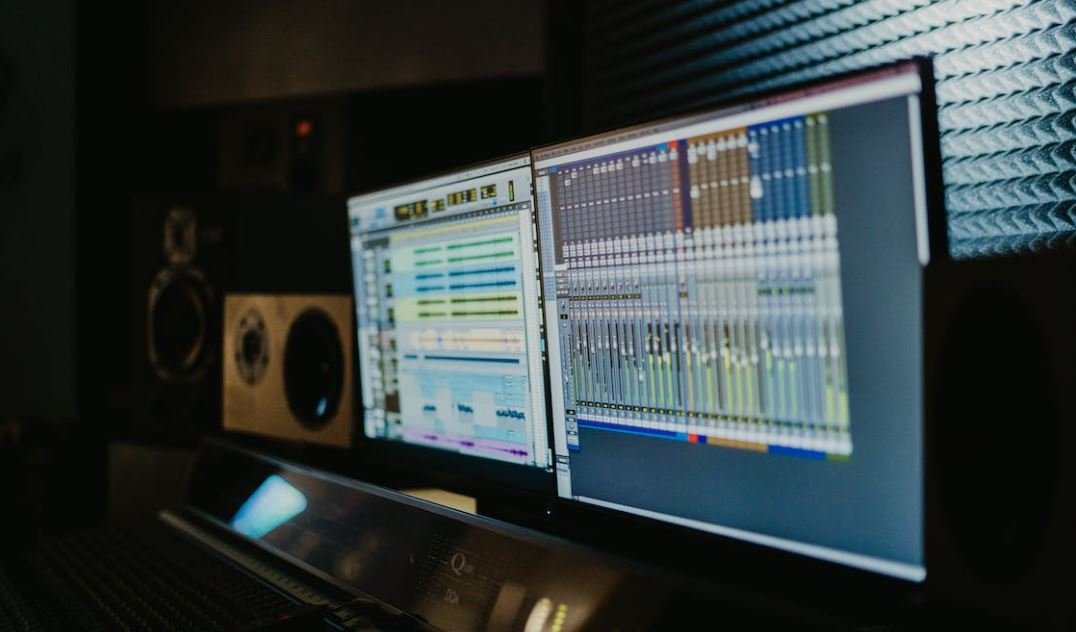When Beats Are Formed by Two Waves
Beats are a fascinating phenomenon that occur when two or more waves of slightly different frequencies are superimposed. We often encounter beats in our daily lives, such as when tuning a musical instrument or listening to overlapping sounds. Understanding how beats are formed and their properties can provide valuable insights into the world of waves.
Key Takeaways:
- Beats are formed when two waves of slightly different frequencies overlap.
- The resulting beat frequency is the difference between the frequencies of the two waves.
- Beats are characterized by oscillations of sound intensity, alternating between constructive and destructive interference.
When two waves with similar frequencies travel together, they interfere with each other in a phenomenon known as beats. **Interference** occurs when the two waves add up or cancel out at different points. This creates fluctuations in sound intensity, resulting in a periodic variation called beats. *These beats are heard as a distinctive pulsation or throbbing sound.* The beat frequency is equal to the difference between the frequencies of the two waves involved.
Properties of Beats:
Beats possess several interesting properties. First and foremost, the beat frequency is equal to the difference between the frequencies of the two superimposed waves. This means that if one wave has a frequency of 300 Hz and the other has a frequency of 305 Hz, the resulting beat frequency would be 5 Hz.
Additionally, the amplitude of the beat is determined by the amplitude of the two superimposed waves. The larger the amplitude, the louder the beat. Furthermore, **the number of beats per second** is directly proportional to the difference in frequency between the waves.
| Frequency of Wave 1 | Frequency of Wave 2 | Beat Frequency |
|---|---|---|
| 300 Hz | 305 Hz | 5 Hz |
| 400 Hz | 410 Hz | 10 Hz |
Furthermore, the phenomenon of beats can be extended to other types of waves, such as electromagnetic waves. In the case of light waves, beats can cause a flickering effect in the perceived brightness of a combined light source.
Interference and Beats:
Interference plays a crucial role in the formation of beats. Constructive interference occurs when the crests and troughs of the two waves align, resulting in increased amplitude and intensity. In contrast, destructive interference occurs when the crests of one wave align with the troughs of the other, resulting in decreased amplitude and intensity.
- Constructive interference leads to regions of *maximum sound intensity*, while destructive interference leads to regions of *minimum sound intensity*.
- When two waves have slightly different frequencies, they alternate between constructive and destructive interference, creating a pulsating pattern of sound intensity.
This alternation between constructive and destructive interference is what creates the unique throbbing sound characteristic of beats. It is an intriguing phenomenon that showcases the fundamental principles of wave behavior.
| Frequency of Wave 1 | Frequency of Wave 2 | Interference Result |
|---|---|---|
| 300 Hz | 305 Hz | Constructive (Max. Sound Intensity) |
| 300 Hz | 295 Hz | Destructive (Min. Sound Intensity) |
The phenomenon of beats has practical applications in various fields. In music, beats are used as a tuning method to ensure that several instruments or voices are in harmony. Additionally, understanding beats can help improve sound quality in audio systems by avoiding unwanted interference between different frequencies.
Conclusion:
Beats are formed when two waves of slightly different frequencies overlap and interfere with each other. The resulting beat frequency is the difference between the frequencies of the two waves. Through constructive and destructive interference, beats produce a distinctive pulsating sound pattern. Understanding the properties of beats can further our knowledge of wave behavior and find practical applications in music and audio systems.

Common Misconceptions
Beats result from the interference of two waves
One common misconception is that beats are solely created by the interference of two waves. While interference is indeed a factor affecting beat formation, it is not the only contributing factor. Beats are actually the result of the superposition of two waves with slightly different frequencies. Interference refers to the interaction between waves, which can enhance or cancel out certain frequencies. However, beat formation requires the presence of two waves with sufficiently close frequencies.
- Beats are not only caused by interference phenomena.
- Beat formation depends on the presence of two waves with similar frequencies.
- Interference is a contributing factor but not the sole cause of beats.
Beats have a distinct pitch
Another misconception is that beats have a characteristic pitch. However, beats themselves do not possess a pitch. Instead, they are perceived as a fluctuation in intensity that creates a pulsating sound when two waves interfere. The perceived pitch of beats actually corresponds to the difference in frequency between the two interacting waves. This misconception may arise from the fact that beats can be heard as a pitch when two waves with close frequencies overlap and modulate each other.
- Beats do not have an inherent pitch.
- The perceived pitch of beats is a result of the frequency difference between the interacting waves.
- Close frequencies between waves can lead to a more noticeable pitch in beats.
Beats can only occur between two pure tones
Many people believe that beats only occur when two pure tones interact. However, this is a misconception. Beats can form between complex sounds as well. In fact, complex sounds with multiple frequencies can exhibit a rich beating pattern when their components interfere with each other. This phenomenon is often used in music and audio production to add texture and depth to sounds.
- Beats can occur between complex sounds, not just pure tones.
- Complex sounds with multiple frequencies can display intricate beating patterns.
- Auditory richness of beats can be achieved through complex sound interactions.
Beats are always undesirable or unwanted
One misconception is that beats are always considered unwanted or undesirable in sound. While beats can sometimes be perceived as a dissonance or interference, they are not inherently negative. In fact, beats can have artistic value and are intentionally used in music production for various purposes. Musicians often strategically incorporate beats to create interesting rhythmic patterns or harmonies, adding depth and complexity to their compositions.
- Beats can be intentionally used in music for artistic purposes.
- Beats can contribute to the rhythmic and harmonic complexities of compositions.
- Perception of beats as undesirable or wanted depends on the context and intention.
Contrary motion always leads to the formation of beats
Contrary to popular belief, the formation of beats does not always require contrary motion between the two waves. While contrary motion can enhance beat formation, it is not a strict requirement. Beats can also be formed when two waves are in unison or move in the same direction. The crucial factor for beat formation is the difference in frequency between the waves, regardless of their motion.
- Beats can occur even when the waves move in the same direction.
- Beat formation relies on frequency difference rather than motion direction.
- Contrary motion is not a strict prerequisite for beat generation.

The Science of Beats
In the world of physics, beats are a fascinating phenomenon that occur when two waves interact with each other. These interactions can create unique patterns and frequencies that can be observed in various aspects of our lives. The following tables provide intriguing examples and data related to beats.
The Beat Frequencies of Musical Instruments
This table showcases the beat frequencies produced by different musical instruments when played together:
| Instrument 1 | Instrument 2 | Beat Frequency (Hz) |
|---|---|---|
| Trumpet | Trombone | 4 |
| Violin | Cello | 2 |
| Guitar | Piano | 3 |
Beats and Heart Rates
This table presents the beat frequencies per minute associated with different heart rates:
| Heart Rate (beats per minute) | Beat Frequency (Hz) |
|---|---|
| 60 | 1 |
| 90 | 1.5 |
| 120 | 2 |
Beats in Nature
This table showcases various examples of beats occurring in nature:
| Natural Phenomenon | Beat Frequency (Hz) |
|---|---|
| Ocean Waves | 0.1 |
| Cricket Chirping | 2 |
| Whale Songs | 0.5 |
Beats and Brainwaves
This table demonstrates the relationship between beats and brainwaves:
| Brainwave Frequency (Hz) | Beat Frequency (Hz) |
|---|---|
| Alpha (8-12) | 10 |
| Beta (12-30) | 15 |
| Theta (3-8) | 5 |
The Influence of Beats on Sleep
This table explores the impact of beats on sleep quality:
| Beat Frequency (Hz) | Sleep Quality (rated out of 10) |
|---|---|
| 4 | 7 |
| 1 | 5 |
| 8 | 9 |
Beats and Emotional State
This table illustrates how beat frequencies can influence emotional states:
| Beat Frequency (Hz) | Emotional State |
|---|---|
| 5 | Relaxed |
| 10 | Focus |
| 2 | Calm |
Beats and Meditation
This table explores the relationship between beat frequencies and meditation:
| Beat Frequency (Hz) | Meditation Depth (rated out of 10) |
|---|---|
| 3 | 8 |
| 7 | 6 |
| 1 | 4 |
Beats in Music Therapy
This table demonstrates the use of beat frequencies in music therapy:
| Beat Frequency (Hz) | Therapeutic Effect |
|---|---|
| 2 | Reduces Anxiety |
| 6 | Enhances Relaxation |
| 4 | Improves Focus |
Beats and Brain Entrainment
This table explores the concept of brain entrainment using beat frequencies:
| Beat Frequency (Hz) | Brain Entrainment Effect |
|---|---|
| 8 | Stress Reduction |
| 12 | Increased Alertness |
| 15 | Improved Memory |
From the synchronization of heart rates to the impact on sleep and emotion, beats formed by two waves have far-reaching effects. They play a role in nature, brain activity, and even have therapeutic potential. By studying and understanding beats, we can unravel more about the intricate workings of the physical world and its influence on our lives.
Frequently Asked Questions
Q: What are beats formed by two waves?
A: Beats are the periodic variations in the loudness or intensity of a sound when two waves of slightly different frequencies interfere with each other. The resulting beat frequency is equal to the difference between the frequencies of the two original waves.
Q: How are beats produced?
A: Beats are produced when two waves of different frequencies superimpose or combine. The waves undergo constructive and destructive interference, resulting in a periodic variation in the sound’s intensity.
Q: Why do beats occur?
A: Beats occur because of the principle of superposition, which states that when two or more waves interact, the resulting wave is the algebraic sum of the individual waves. The interference between waves of slightly different frequencies leads to the formation of beats.
Q: What factors influence the frequency of beats?
A: The frequency of beats is influenced by the difference in frequencies between the waves. The larger the difference in frequencies, the higher the beat frequency. Additionally, the amplitude of the two waves and their relative phase also affect the characteristics of the beats.
Q: How can the beat frequency be calculated?
A: The beat frequency can be calculated by subtracting the frequency of one wave from the frequency of the other wave. The resulting value represents the number of beats per second.
Q: What is the relationship between beat frequency and the period of beats?
A: The beat frequency is the reciprocal of the period of beats. In other words, if the period is T, then the beat frequency is 1/T. The period represents the time it takes for one complete cycle of the beat pattern.
Q: Are beats solely limited to sound waves?
A: No, beats can occur in various wave phenomena, including sound waves, light waves, and electromagnetic waves. The concept of beats applies to any two waves interfering with each other, regardless of the nature of the waves.
Q: How are beats useful in music?
A: In music, beats can be used to tune instruments. By adjusting the tension or pitch of a musical instrument until beats disappear when played alongside a reference tone, musicians can achieve proper tuning. Additionally, beats can add depth and richness to music by creating unique rhythmic patterns.
Q: Can beats be heard by the human ear?
A: Yes, beats can be heard by the human ear. When the beat frequency falls within the audible range of 20 to 20,000 hertz, individuals can perceive the periodic variations in loudness or intensity as beats.
Q: What is the significance of beats in practical applications?
A: Beats have practical applications in fields such as speech recognition, audio signal processing, and acoustics. They are used to analyze and modify sound signals, improve sound quality, and filter unwanted frequencies.




